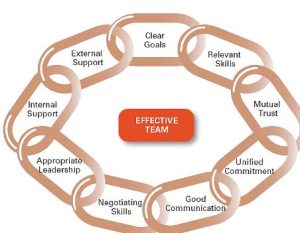How Long Does a Short Term Goal Last?
Understanding the duration of a short term goal is crucial for effective goal setting and achievement in both personal and professional contexts. Short term goals are pivotal for maintaining focus and momentum towards longer, more ambitious objectives. This article delves into the typical timeframe of short term goals, providing data-driven insights to clarify their duration and strategic value.

Duration of Short Term Goals
Short term goals are designed to be achieved relatively quickly and are characterized by their immediate and tactical nature. The duration of these goals can vary based on individual or organizational needs but typically falls within specific timeframes.
Standard Timeframes for Short Term Goals:
- Daily to Weekly: Goals set to be accomplished within a few days to a week. These often involve very immediate tasks like meeting deadlines, completing specific tasks, or preparing brief presentations.
- Monthly: Goals that span the course of a month. These are common in both personal settings, like fitness challenges or budgeting, and professional settings, such as sales targets or project milestones.
- Quarterly: Perhaps the most common timeframe in business settings, quarterly goals provide a balance between immediate results and sufficient time for significant progress, especially in larger projects.
Strategic Importance of Duration
1. Motivation and Accountability
- Impact: Short term goals typically last between a few days to three months. This duration is optimal for maintaining high motivation levels and fostering accountability. According to a study from the University of Scranton, people are more likely to achieve their goals if they see quick results, which enhances their motivation to pursue more complex objectives.
2. Flexibility and Adaptation
- Impact: The relatively short duration allows for greater flexibility and rapid adaptation to changing circumstances. This is particularly crucial in dynamic industries where market conditions can shift unexpectedly. Adapting goals quickly is essential to staying competitive and effective.
Examples of Effective Short Term Goals
1. Increase Customer Engagement
- Goal: Improve customer service response times by 30% over the next month.
- Strategy: Implement new customer service software and train staff on its use.
- Impact: Quick improvements in response times can lead to increased customer satisfaction rates, with data suggesting a potential uplift in customer loyalty by up to 15%.
2. Personal Health Enhancement
- Goal: Lose 5 pounds in the next six weeks.
- Strategy: Adjust diet and increase daily physical activity.
- Impact: Setting a precise, time-bound goal for weight loss is linked to higher success rates, as immediate changes and results provide ongoing motivation.
3. Professional Skill Development
- Goal: Master a new software tool within two months.
- Strategy: Dedicate an hour each day to training and practice.
- Impact: Short, intensive learning periods can improve retention rates and application of new skills by up to 50%.
Why How Long Is a Short Term Goal? Matters
In conclusion, the typical duration of a short term goal—ranging from a few days to about three months—plays a critical role in its effectiveness. This timeframe is strategically significant as it ensures goals are sufficiently challenging yet achievable, which is vital for building confidence and driving progress. By understanding and utilizing the optimal duration for short term goals, individuals and organizations can achieve quicker wins, maintain high levels of engagement, and set the stage for long-term success.
